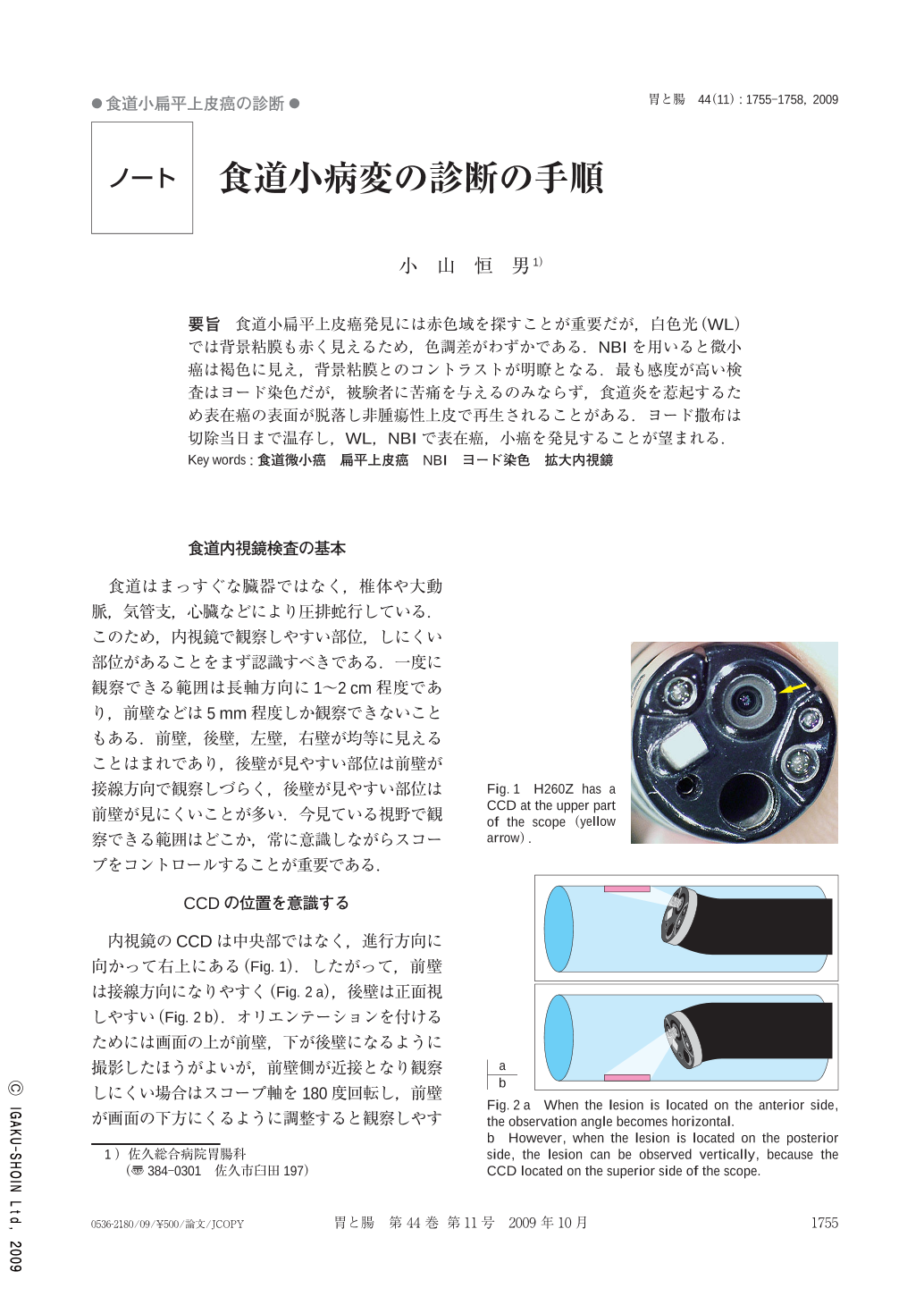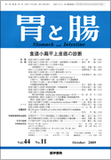Japanese
English
- 有料閲覧
- Abstract 文献概要
- 1ページ目 Look Inside
- 参考文献 Reference
- サイト内被引用 Cited by
要旨 食道小扁平上皮癌発見には赤色域を探すことが重要だが,白色光(WL)では背景粘膜も赤く見えるため,色調差がわずかである.NBIを用いると微小癌は褐色に見え,背景粘膜とのコントラストが明瞭となる.最も感度が高い検査はヨード染色だが,被験者に苦痛を与えるのみならず,食道炎を惹起するため表在癌の表面が脱落し非腫瘍性上皮で再生されることがある.ヨード撒布は切除当日まで温存し,WL,NBIで表在癌,小癌を発見することが望まれる.
An ultra tiny SCC is defined as a tumor 5mm or less in size. The endoscopic finding of ultra tiny SCC is a flat red spot. The background mucosa looks red under white-light endoscopy. Therefore, the contrast between SCC and background mucosa is small. However, NBI endoscopy reveals SCC as a red brown area, and the contrast becomes clearer. Therefore, NBI is useful for the detection of ultra tiny esophageal SCC. Iodine staining is the most sensitive method to detect an ultra tiny SCC. However, the patient feels discomfort and the surface of SCC degenerates and is covered by non-neoplastic mucosa. Sometimes, the detection by iodine becomes difficult. Therefore, it might be more suitable to detect ultra tiny SCC by WL or NBI, rather than using iodine staining.

Copyright © 2009, Igaku-Shoin Ltd. All rights reserved.


